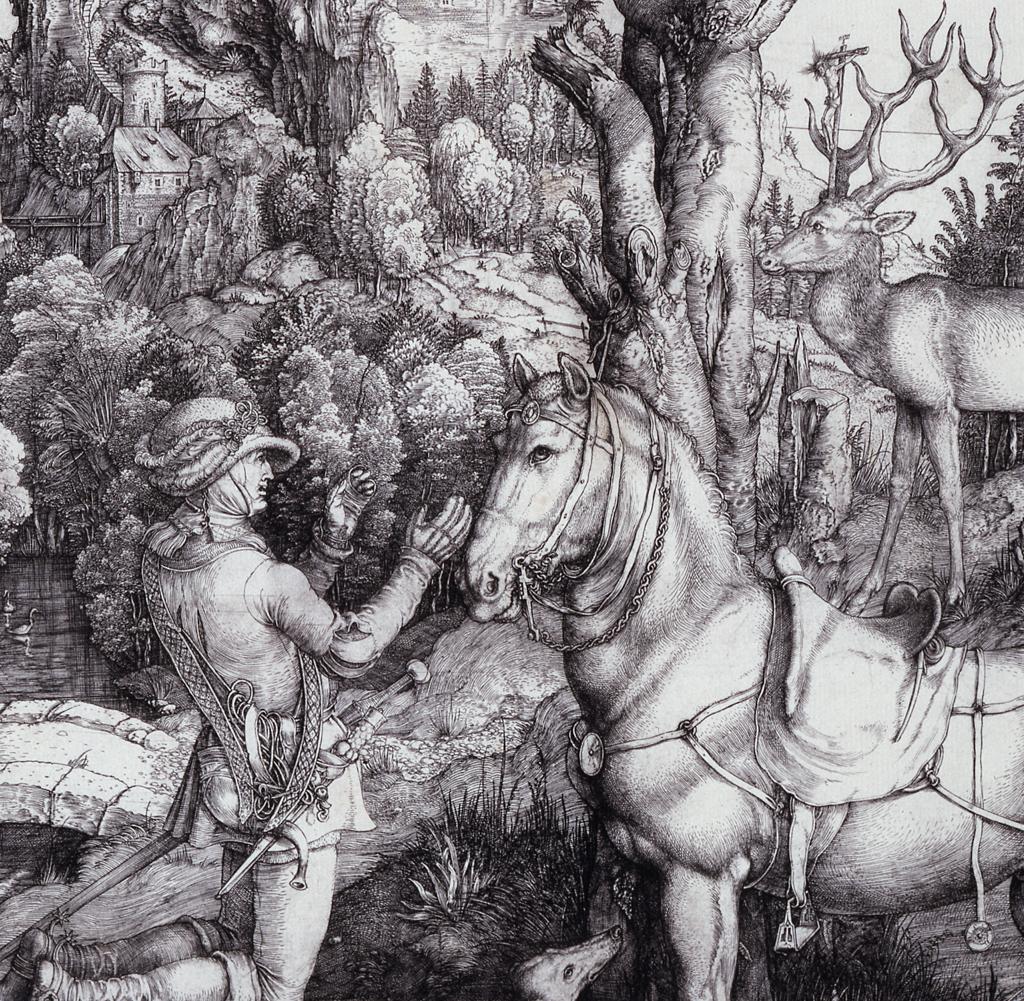Creating Masterpieces and Dürer’s Legacy
The St. Eustace engraving, like the rhino woodcut, demonstrates how the development of Dürer’s artistic interests and abilities strongly depends on the mutual interactions between his drawings and his prints (note 1). Artistic motifs in the St. Eustace engraving are conveyed compellingly because Dürer was able to study them in independent compositions of nature. Dürer skillfully mastered the depiction of the natural world in visual terms, and consequently, his works became standardized as model objects of close observation. For many artists in the sixteenth century, mastering Dürer’s style was almost as important as mastering the portrayal of nature itself.
During the Renaissance, attentive observation emerged as a form of learning experience and was increasingly related to the pursuit of scientific knowledge. Artists were not considered to be observers of nature until Dürer, a creative genius, had the presence of mind to make a habit of studying nature firsthand. He initiated a practice that became consumed at an international level, as artists and naturalists increasingly immersed themselves in the representation and direct investigation of natural elements. Whether willingly or not, Dürer contributed to the growth and development of the field of natural history. His images were legitimized – especially his representations of animals – and used as educational tools. Since then, the study of natural history has drastically improved as the practice of observing nature firsthand has been universally adopted.
Notes:
note 1. Andrew Robison and Klaus Schröder have similarly highlighted this interaction between multiple media in Dürer’s oeuvre in a recent exhibition. See A. Robison and K. Schröder, Albrecht Dürer: Master Drawings, Watercolors, and Prints from the Albertina, (Washington, 2013).
